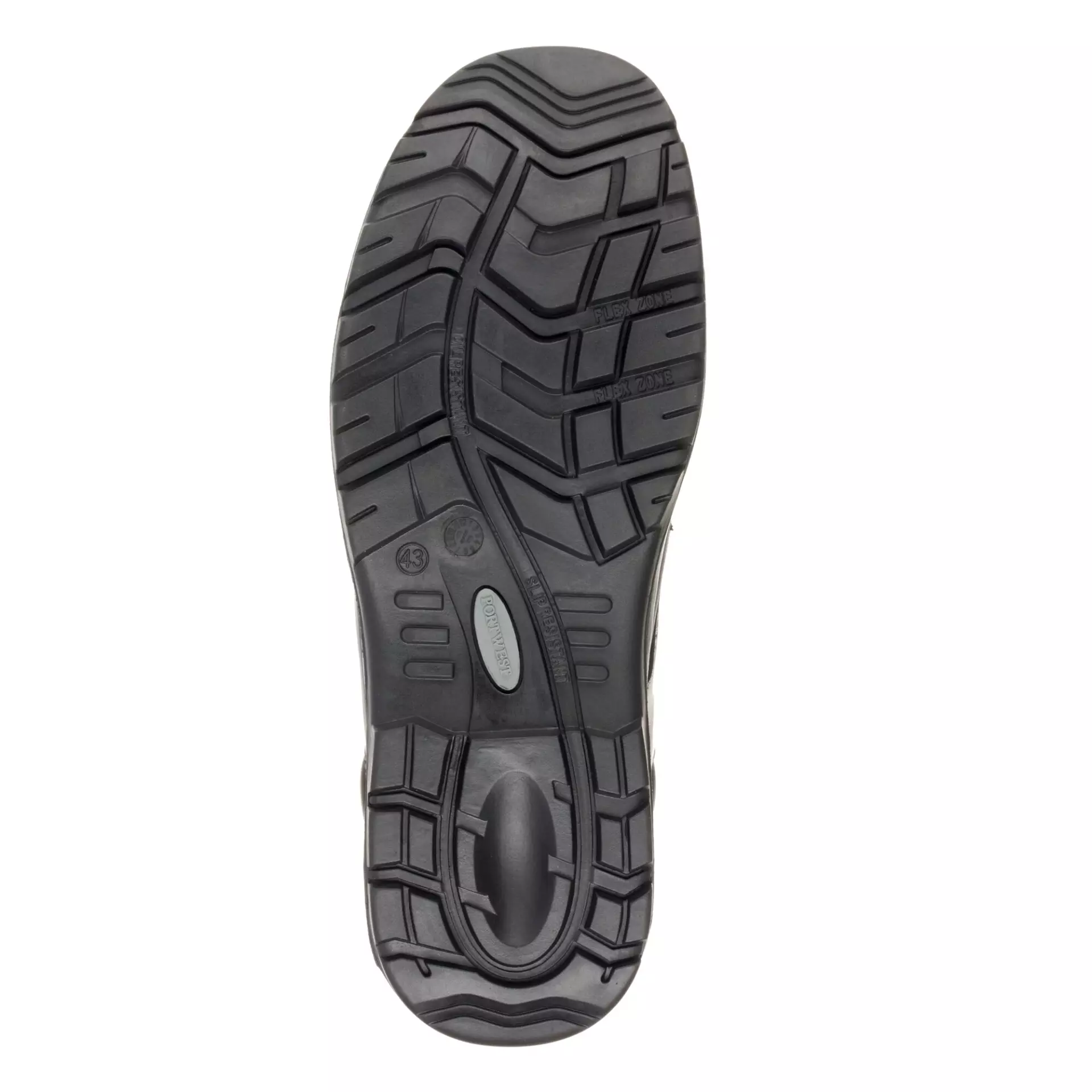


Features You'll Love

EN 20345 · S3
Provides 200-joule impact-resistant toe protection, a fully enclosed heel, antistatic properties, and a shock-absorbing heel. Also includes a water-resistant upper, a penetration-resistant midsole, and a cleated outsole for enhanced grip.
Portwest
Clyde Safety Boot S3 HRO CI HI, Black
Clyde Safety Boot S3 HRO CI HI, Black
4 / 5
90,32 €
Choose size
Free delivery
Features You'll Love

EN 20345 · S3
Provides 200-joule impact-resistant toe protection, a fully enclosed heel, antistatic properties, and a shock-absorbing heel. Also includes a water-resistant upper, a penetration-resistant midsole, and a cleated outsole for enhanced grip.
Product description
Professional safety boot featuring classic design with advanced protective elements for demanding work environments. The boot combines a protective TPU scuff cap with moisture-wicking inner lining and innovative outsole flex zones for enhanced durability, comfort, and performance. Heat-resistant construction withstands temperatures up to 300°C while providing comprehensive protection through steel toecap and midsole components.
Product Features:
- Protective TPU scuff cap for high impact resistance and increased longevity
- Moisture wicking inner lining for protection against cold, damp and heat
- Innovative outsole flex zones for increased flexibility and stability
- Full grain leather construction with water resistant upper
- Wide fitting design for enhanced comfort
Technical Details:
- Direct injected PU/rubber outsole with supreme grip and energy absorption
- Heat resistant outsole up to 300°C
- Cold insulation properties
- Protective steel toecap and pierce resistant steel midsole
- Anti-static footwear with energy absorbing seat region
- Dual density sole unit with fuel and oil resistant properties
- SRC slip resistant outsole for ceramic and steel surfaces
Standards:
- EN ISO 20345: 2011 S3
- AS 2210.3
- CE certified
- UKCA marked